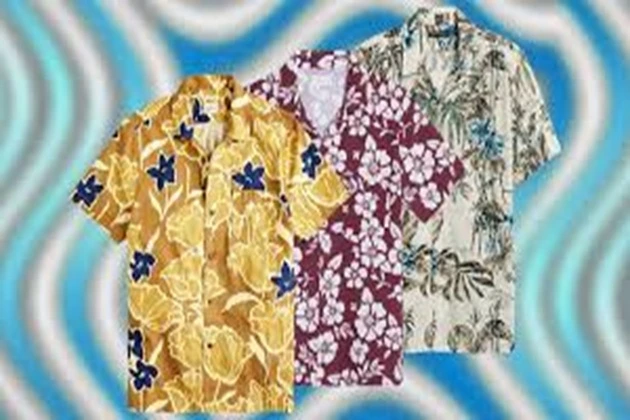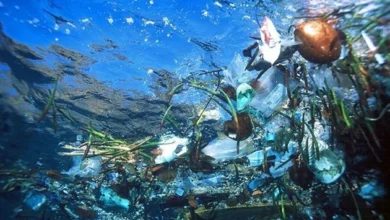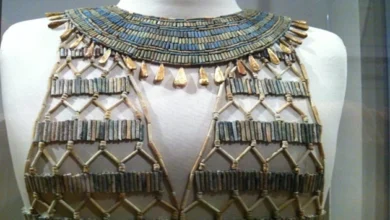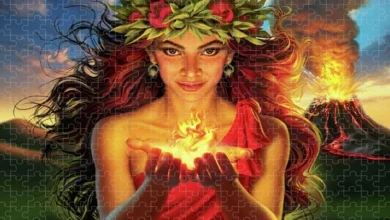How the Hawaiian shirt conquered the world – from simple sneakers to collectible masterpieces

Relaxation, a feeling of relaxation, fun, joy – all these can be expressed by wearing a Hawaiian shirt. It has a long but fascinating history: from the colonists’ work shirts, it transformed into light and festive clothes, which were later approved as a uniform. It may seem strange to come to the office in a colorful shirt, but not in Hawaii, where it’s always hot. They began to call it clothes for “Aloha Friday,” symbolizing the end of the working week. Aloha was favored by tourists who liked extravagant, bright shirts with large and colorful prints, while the locals avoided them.
How shirts appeared in Hawaii

Before colonization, Hawaii was inhabited by tribes that wore minimal clothing—men wore loincloths, and women wore short skirts. This is because the fabric could be made from mulberry tree fibers, which is a very long and challenging process. It was called kappa; in other countries, tapa was covered with elementary drawings, more like tattoos.
The first shirts were brought to the islands by colonists. The sailors wore long cotton shirts to graduation, which they began to exchange with the locals for various items. Then came the thick blue-and-white cotton “palaka” fabric, which was imported from Germany and from which shirts were sewn. They turned out to be hot, but for those who worked on the plantations, they turned out to be a real salvation because they protected the skin from cuts of the reeds.
Beautiful Hawaiian shirts appeared in their usual form much later—in the 50s, 60s, and 30s; they were born as light clothing with short sleeves and a print. They were diverse due to the accumulation of people of different nationalities who brought a piece of their culture, habits, and traditions. Filipinos adopted the style of wearing a shirt for graduation; Hawaiian traditions of aloha, Japanese fabric, and Chinese tailors were intertwined. That’s how the Hawaiian shirt turned out.
Hawaiian shirt created by a migrant
There are several versions of the origin of the Hawaiian shirt. One of them was the tailor Tetaro Miyamoto, who sold and sewed custom–made clothes from traditional Japanese fabrics with large patterns and colorful colors. They asked him to make a short-sleeved shirt, and even though he had never done it before, he fulfilled the order. He liked the result very much, and the tailor sewed several more shirts of a similar style.
However, Ellery Chan patented and organized the production of Hawaiian shirts called “Aloha T-shirts,” which became the trademark. Hawaiians were gaining popularity, so there were many manufacturers. There were small and large ones, but shirts made in the factories of Alfred Shaheen, who succeeded in this business, stood out and are still appreciated.
For mass tailoring, a lot of fabric was required, which was not produced on the islands. So, it had to be waited for from other countries, and it took up to 10 months. Entrepreneurs risked a lot by investing their money in its purchase. Visit. A F R I N I K . C O M . For the full article. Shaheen solved this problem by opening his factory to produce textiles, paints, and everything else required to make shirts.
Tourists saved Hawaiian shirts
Hawaiian shirts have become an integral part of the image of tourists who have chosen the islands for recreation. They were interested in the new culture, and the colorful shirts reflected their intentions to get the desired entertainment and relaxation. Tourists sought to purchase a multicolored shirt to fit into the local society, although they began to stand out. However, the tourists’ interest in Hawaiian national clothing saved the shirt from oblivion.
After existing for some time, interest in Hawaiian shirts began to cool down, especially after Hawaii gained statehood in 1959. The colorful national shirts already seemed tasteless because they differed significantly from the European style. The demand for shirts started to fall, but thanks to the right actions, they have been revived again. This was facilitated by Aloha Week, the most significant holiday in Hawaii, which can last for several days and recently has stretched over a month.
The event is dedicated to the beginning of the new calendar year in Hawaii, following the old traditions. This is a parade where participants wear national clothes: women wear muumuu (a long dress made of colorful fabric), and men wear aloha. To match the holiday spirit, tourists began to buy Hawaiian shirts actively, bringing income to the country. So, unexpectedly, October, which was not considered a popular month for tourism, got a new lease of life. Currently, this period is called the Aloha Festival.
Hawaiian shirts as a uniform for office workers

The national culture should not be based only on tourists. On the contrary, this is a matter for residents, and it took some steps to get them interested in wearing the aloha at any time of the year, not just at the Festival. The initiators used the largest contingent of workers and the uniqueness of the climate. Office workers had to adhere to the dress code and come to work in suits, and given the heat in the summer, it was a big challenge because there were no air conditioners then, and they would have been expensive.
The Hawaiian Fashion Guild decided to rectify the situation. In 1962, aloha-style shirts were distributed, two pieces to each member of the House and Senate of Hawaii. The advantage of a comfortable and light shirt in the hot season was appreciated, and a resolution was passed allowing the wearing of aloha shirts from May 1 to October, that is, during the hottest time.
Later, in 1966, “Friday the Aloha” appeared. It meant that this was the last day of work, followed by the weekend, and they began to wear Hawaiian shirts on this day. So, gradually, shirts took their place in the wardrobe of business people, and then they began to be worn every day. Only people connected with the jurisdiction did not wear them because they had their mandatory uniform. Lawyers were allowed to wear a shirt depending on which case was being considered in court. On the last working day of the week, the radio station started playing a song with the words: “Today is Friday, aloha, without work until Monday!”
Colorful Hawaiian shirt ornament
Tourists chose Hawaiian shirts for their extravagant look and enjoyed them even when they seemed wild to the locals. It was impossible to see a Hawaiian in brightly colored clothes: they prefer shirts with few patterns and muted tones. You won’t see them in colorful shirts. They use inside-out tailoring for this. The pattern is inside, barely showing through from the outside. This is a distinctive feature of tourists and locals.
Hawaiian motifs include islands, fish, and flowers. The patterns even have their names. Shaheen signed them along the edge of the patterns, which later helped identify them among thousands of existing ones. For example, Elvis Presley’s shirt had a motif honoring the Hawaiian fishing holiday, Hukilau.
Hawaiian shirts may seem similar to an inexperienced person, but there is a big difference. You can buy an authentic Hawaiian shirt if you understand patterns and prints. Patterns from Polynesian and Samoan cultures are often used, which are part of the overall tapa design. Hawaiian art is sophisticated, so not everything called a Hawaiian shirt is one.
In a high-quality shirt, all the elements are taken into account: the placement of the pocket, the pattern of which fits into the overall background so it does not stand out but merges; the front button placket, which is also selected when cutting out according to the pattern.
It takes more material to make such shirts, so they are more expensive but famous for their quality. Even the buttons on such shirts are not standard but are selected for each model: they can be made of ivory in the shape of a Buddha, in the shape of a Hawaiian coat of arms, or made of metal, jade, or plastic.
Collectible Hawaiian Shirts

Designer Alfred Shaheen was the first to take the tailoring of Hawaiian shirts seriously. He did his best to make them high-quality and with an interesting pattern. Before that, the “hash” method was used – the word is taken from cooking: this is a dish in which they put everything at hand. So it was with the tailoring of a Hawaiian shirt – the more garish the pattern, the better.
Because of this, they looked like a hodgepodge of images made with stamps. Shahin used a different approach: he took ornaments that would reflect the national culture. To do this, he hired artists, paid them salaries (which greatly surprised local producers), and sent them to different parts of the country to study local culture. Over time, Shaheen made the shirt a work of art, so it became a collector’s item. The first long-sleeve shirts were not produced for a long time and are especially appreciated.
Shirts produced from 1945 to 1955, called “silk” shirts, are valuable but have nothing to do with silk. Silk is a dense viscose fabric that absorbs colors well, making the pattern rich. Such shirts are sold at auctions for 10,000–15,000 dollars and are still of excellent quality. Keoni brand shirts are also appreciated for their very unusual abstract patterns.
Aloha shirts are popular with surfers, entertainers, actors, and politicians. After all, a Hawaiian shirt can be stylish, expensive, and interesting, so a person in one immediately catches the eye and attracts attention to himself.




